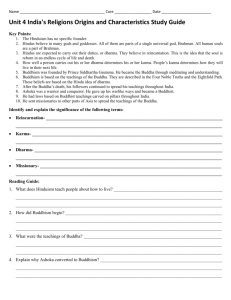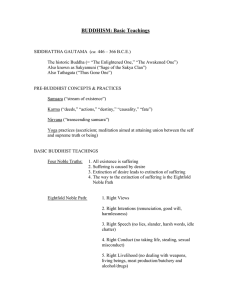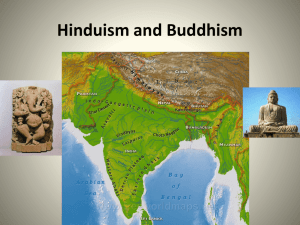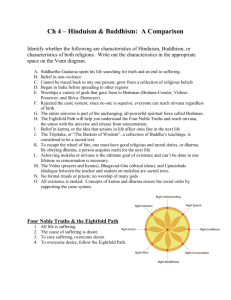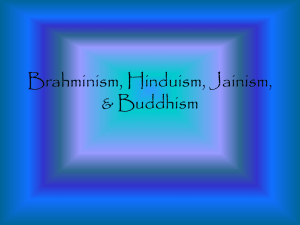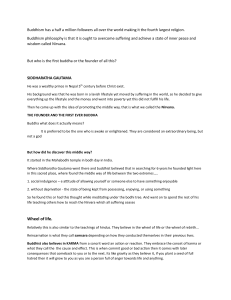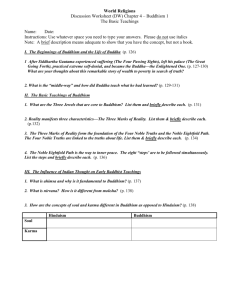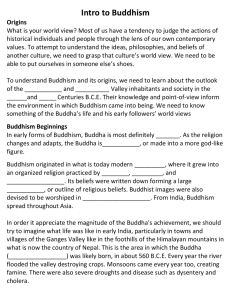Terms and People
advertisement
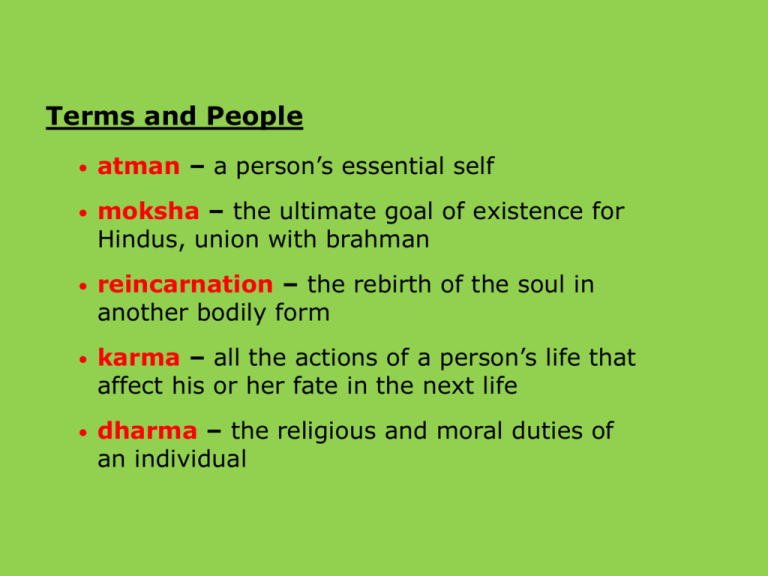
Terms and People • atman – a person’s essential self • moksha – the ultimate goal of existence for Hindus, union with brahman • reincarnation – the rebirth of the soul in another bodily form • karma – all the actions of a person’s life that affect his or her fate in the next life • dharma – the religious and moral duties of an individual Terms and People (continued) • ahimsa – nonviolence • caste – in traditional Indian society, an unchangeable social group into which a person is born • Siddhartha Gautama – a reformer whose teachings spread across Asia to become the core beliefs of Buddhism • Four Noble Truths – teachings of the Buddha which lie at the heart of the Buddhist religion Terms and People (continued) • Eightfold Path – a way of life followed by Buddhists to achieve nirvana • nirvana – union with the universe and release from the cycle of rebirth • sect – a subgroup 3rd largest religion Ganesha: Lord of Success Shiva: The Destroye r Despite the complexity of the religion, all Hindus have the same goal and core beliefs. One force, brahman, underlies everything. The goal of life is to achieve moksha, or union with brahman. Every person has an atman, or essential self, and experiences reincarnation. Karma holds that our actions affect our fate in the next life. Hindus believe in dharma, the religious and moral duties of the person. They practice ahimsa, nonviolence. Hindus worship many gods. The most important are: • Brahma, the Creator • Vishnu, the Preserver • Shiva, the Destroyer A complex system of castes emerged. This system was closely linked to Hindu beliefs. Castes maintained social order and gave people a sense of identity, though life was very hard for those in the lowest rung. People believed karma determined their caste. Buddhism emerged in the foothills of the Himalayas around 500 B.C. The teachings of a reformer named Siddhartha Gautama spread to form the religion. It began when Gautama left his palace home to find an answer to why people suffer. Gautama took a seat under a tree and meditated. When he finally rose, he had become the Buddha, “Enlightened One.” Buddha spent his life explaining the Four Noble Truths, the heart of Buddhist belief. • All life is full of suffering, pain, and sorrow. • The cause of suffering is nonvirtue (negative deeds). • The only cure for suffering is to overcome nonvirtue. • The way to overcome nonvirtue is to follow the Eightfold Path. • He described the Eightfold Path, a way of life that would eventually lead to enlightenment. • The final goal for the Buddhist is nirvana, union with the universe. Buddhism rejected the Hindu caste system. Rather than focusing on priests, ritual and deities, Buddhism encouraged each person to seek self-enlightenment. The religion spread and the Buddha’s teachings were recorded.


